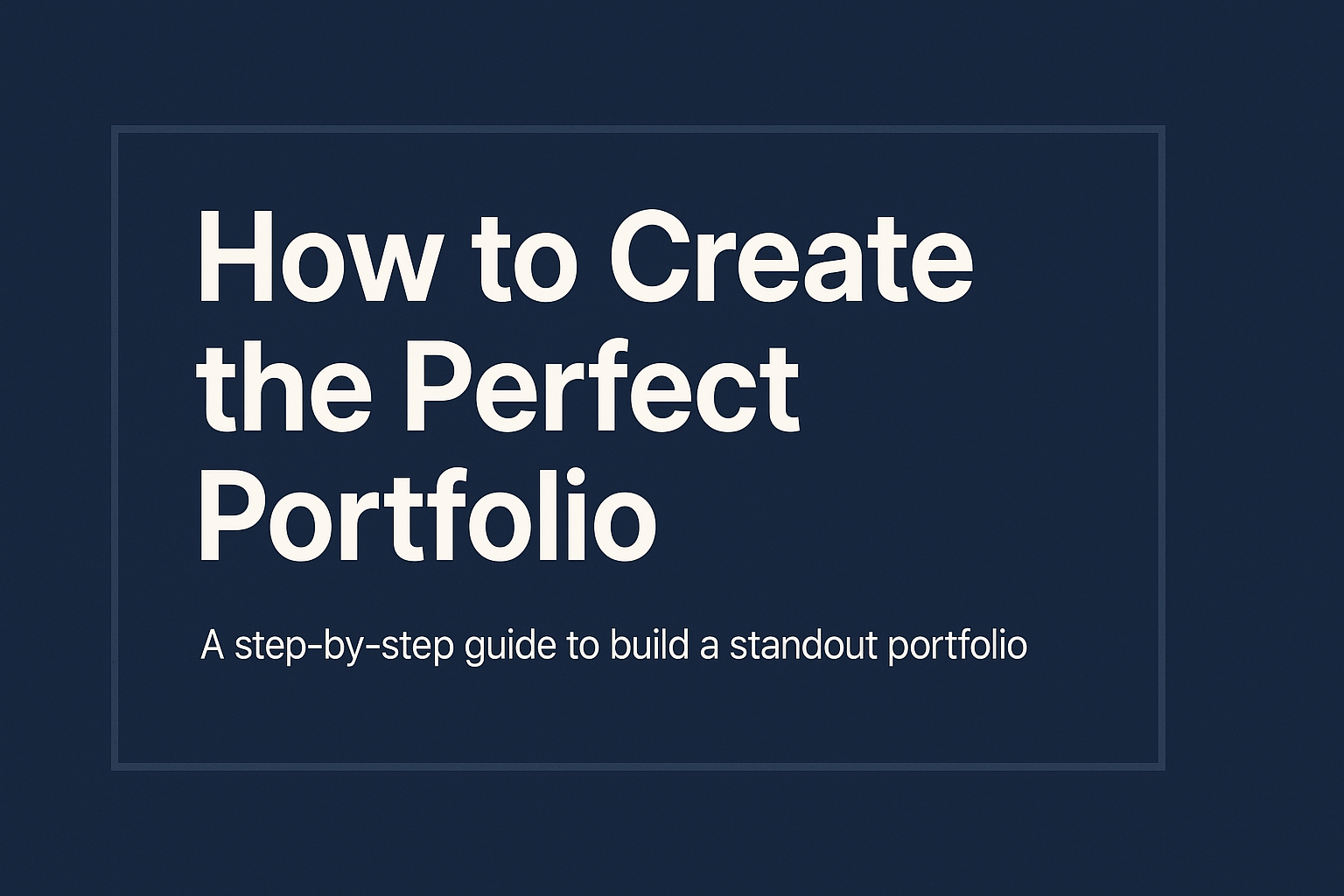A perfect portfolio is not about having the most projects or the flashiest design — it’s about clarity, focus, and intention. Whether you’re a designer, developer, writer, or creative professional, your portfolio is often your first impression. Make it count.
Here’s a step-by-step guide to building a portfolio that opens doors.

1. Define What “Perfect” Means for You
Perfection isn’t universal — it depends on your goals. Ask yourself:
- i. What kind of work do I want to attract?
- ii. Who is my ideal viewer — a hiring manager, a client, a collaborator?
- iii. What do they need to see in order to trust my abilities?
Your portfolio should speak directly to that audience. It’s not just a collection of work — it’s a carefully crafted narrative that positions you for the opportunities you want.
2. Curate Your Strongest Work
Showcase only your best and most relevant projects. Aim for four to six pieces that highlight:
- i. Your technical skills and creative thinking
- ii. Your versatility across different types of work
- iii. Your personal style or unique approach
It’s better to have a few exceptional pieces than a long list of average ones. Each project should earn its place.
3. Tell the Story Behind Each Project
Go beyond the visuals or final deliverables. For each project, briefly walk the viewer through:
- i. The problem or objective
- ii. Your role and contribution
- iii. The process and decisions you made
- iv. The results — ideally with impact metrics or real outcomes
This gives context and depth to your work, and shows how you think — not just what you can produce.
4. Present Yourself with Purpose
Your “About” section matters. It’s your chance to humanize your portfolio and establish credibility. Keep it concise and authentic:
- i. Who you are and what you do
- ii. What you care about professionally
- iii. The kind of work you’re currently looking for
Including a professional photo can add warmth and trust, though it’s not mandatory. A clear, confident tone is more important than flashy design.
5. Design with Simplicity and Usability in Mind
A strong portfolio is easy to navigate, fast to load, and visually clean. Avoid unnecessary complexity. Make sure it’s:
- i. Mobile-friendly
- ii. Organized logically (projects, about, contact)
- iii. Styled consistently (fonts, colors, spacing)
Good design supports your work — it shouldn’t overshadow or compete with it.
6. Make It Easy to Contact You
Every portfolio should include a clear call to action. Decide what you want people to do:
- i. Get in touch
- ii. Book a consultation
- iii. View your resume
- iv. Follow you on social platforms
Provide multiple contact options if appropriate: email, contact form, LinkedIn, or other relevant links.
7. Keep It Updated
A great portfolio is never static. Regularly review and refresh it:
- i. Replace outdated work with new, stronger pieces
- ii. Update your bio and resume
- iii. Refine the copy to reflect your current direction
Your portfolio should evolve as you do.

Bonus Tip
Portfolio Building Tools
- i. Notion
- ii. GitHub Pages (for devs)
Create the Perfect Portfolio!
The perfect portfolio isn’t the one with the most bells and whistles. It’s the one that tells your story clearly, demonstrates your value, and makes it easy for the right people to say yes.
Build it with intention. Refine it with care. And most importantly — make sure it reflects not just what you’ve done, but where you’re going next.
[ Read More |How to Create a LinkedIn Profile That Truly Stands Out: A Guide ]
[ Read More | How to Become a Software Developer: A Beginner’s Guide ]







